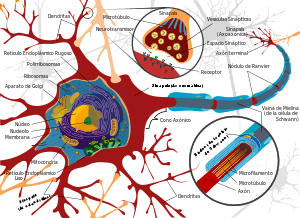
- Image via CrunchBase
A big concern for the U.S., Canada and others . . .
I spent Columbus Day in Sunnyvale, fittingly, meeting with a roomful of new arrivals. Well, relatively new. They were Indians living in Silicon Valley. The event was organized by the Think India Foundation , a think-tank that seeks to solve problems which Indians face. When introducing the topic of skilled immigration, the discussion moderator, Sand Hill Group founder M.R. Rangaswami asked the obvious question. How many planned to return to India? I was shocked to see more than three-quarters of the audience raise their hands.
, a think-tank that seeks to solve problems which Indians face. When introducing the topic of skilled immigration, the discussion moderator, Sand Hill Group founder M.R. Rangaswami asked the obvious question. How many planned to return to India? I was shocked to see more than three-quarters of the audience raise their hands.
Even Rangaswami was taken back. He lived in a different Silicon Valley, from a time when Indians flocked to the U.S. and rapidly populated the programming (and later executive) ranks of the top software companies in California. But the generational difference between older Indians who have made it in the Valley and the younger group in the room was striking. The present reality is this. Large numbers of the Valley’s top young guns (and some older bulls, as well) are seeing opportunities in other countries and are returning home. It isn’t just the Indians. Ask any VC who does business in China, and they’ll tell you about the tens of thousands who have already returned to cities like Shanghai and Beijing. The VC’s are following the talent. And this is bringing a new vitality to R&D in China and India .
.
Why would such talented people voluntarily leave Silicon Valley, a place that remains the hottest hotbed of technology innovation on Earth? Or to leave other promising locales such as New York City, Boston and the Research Triangle area of North Carolina? My team of researchers at Duke, Harvard and Berkeley polled 1203 returnees to India and China during the second half of 2008 to find answers to exactly this question. What we found should concern even the most boisterous Silicon Valley boosters.
We learned that these workers returned in their prime: the average age of the Indian returnees was 30 and the Chinese was 33. They were really well educated: 51% of the Chinese held masters degrees and 41% had PhDs. Among Indians, 66% held a masters and 12% had PhDs. These degrees were mostly in management, technology, and science. Clearly these returnees are in the U.S. population’s educational top tier—precisely the kind of people who can make the greatest contribution to an economy’s innovation and growth. And it isn’t just new immigrants who are returning home, we learned. Some 27% of the Indians and 34% of the Chinese had permanent resident status or were U.S. citizens. That’s right—it’s not just about green cards.
returned in their prime: the average age of the Indian returnees was 30 and the Chinese was 33. They were really well educated: 51% of the Chinese held masters degrees and 41% had PhDs. Among Indians, 66% held a masters and 12% had PhDs. These degrees were mostly in management, technology, and science. Clearly these returnees are in the U.S. population’s educational top tier—precisely the kind of people who can make the greatest contribution to an economy’s innovation and growth. And it isn’t just new immigrants who are returning home, we learned. Some 27% of the Indians and 34% of the Chinese had permanent resident status or were U.S. citizens. That’s right—it’s not just about green cards.
Related articles
- The Future of Indian Technology (techcrunch.com)
- Entrepreneurship tech boom erupts in India (blogs.berkeley.edu)
- Be the first one to know or involved in Grow VC US (growvc.com)










